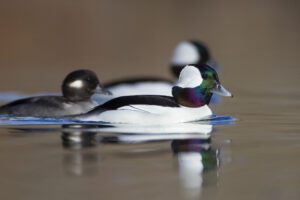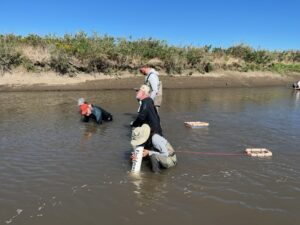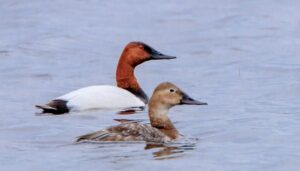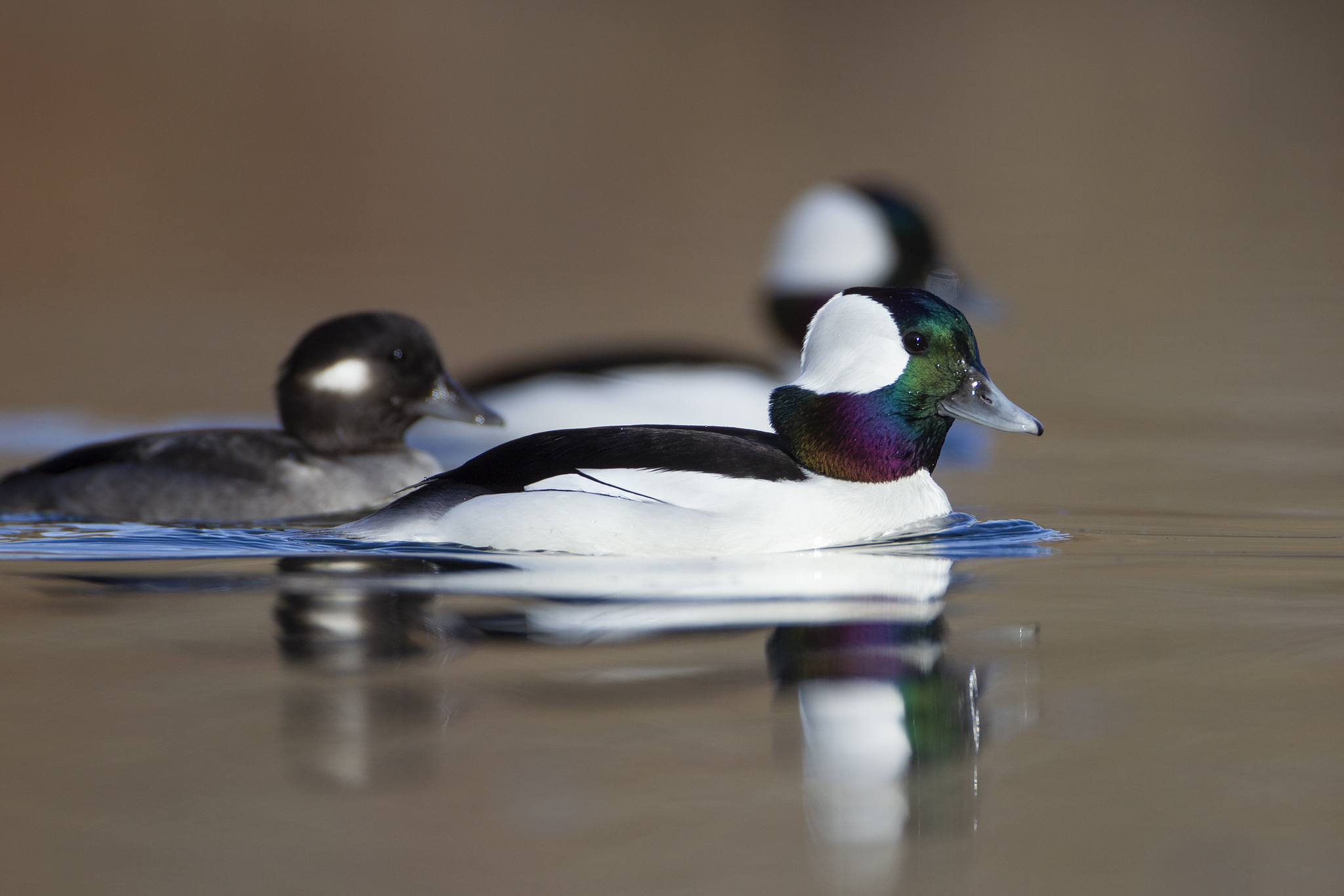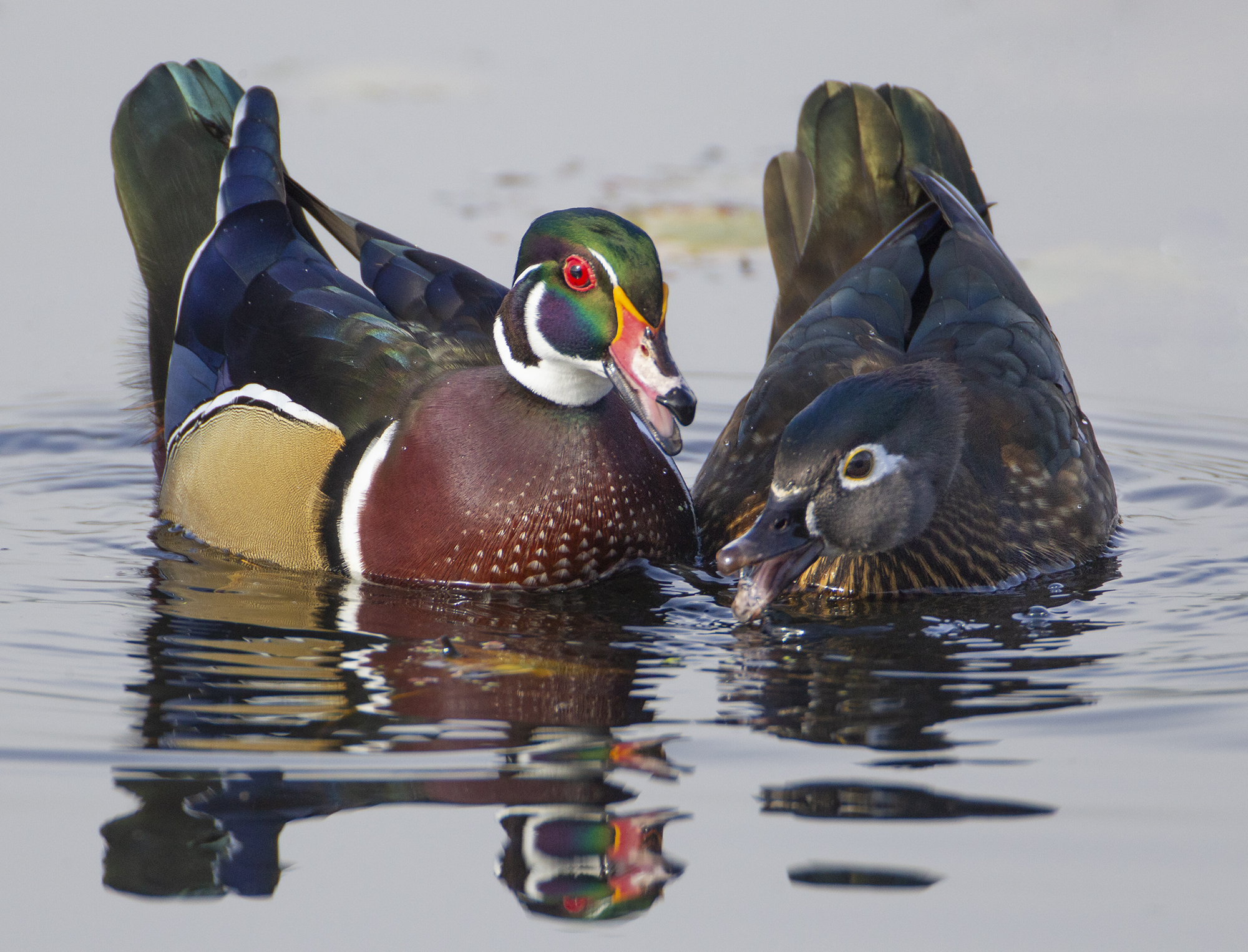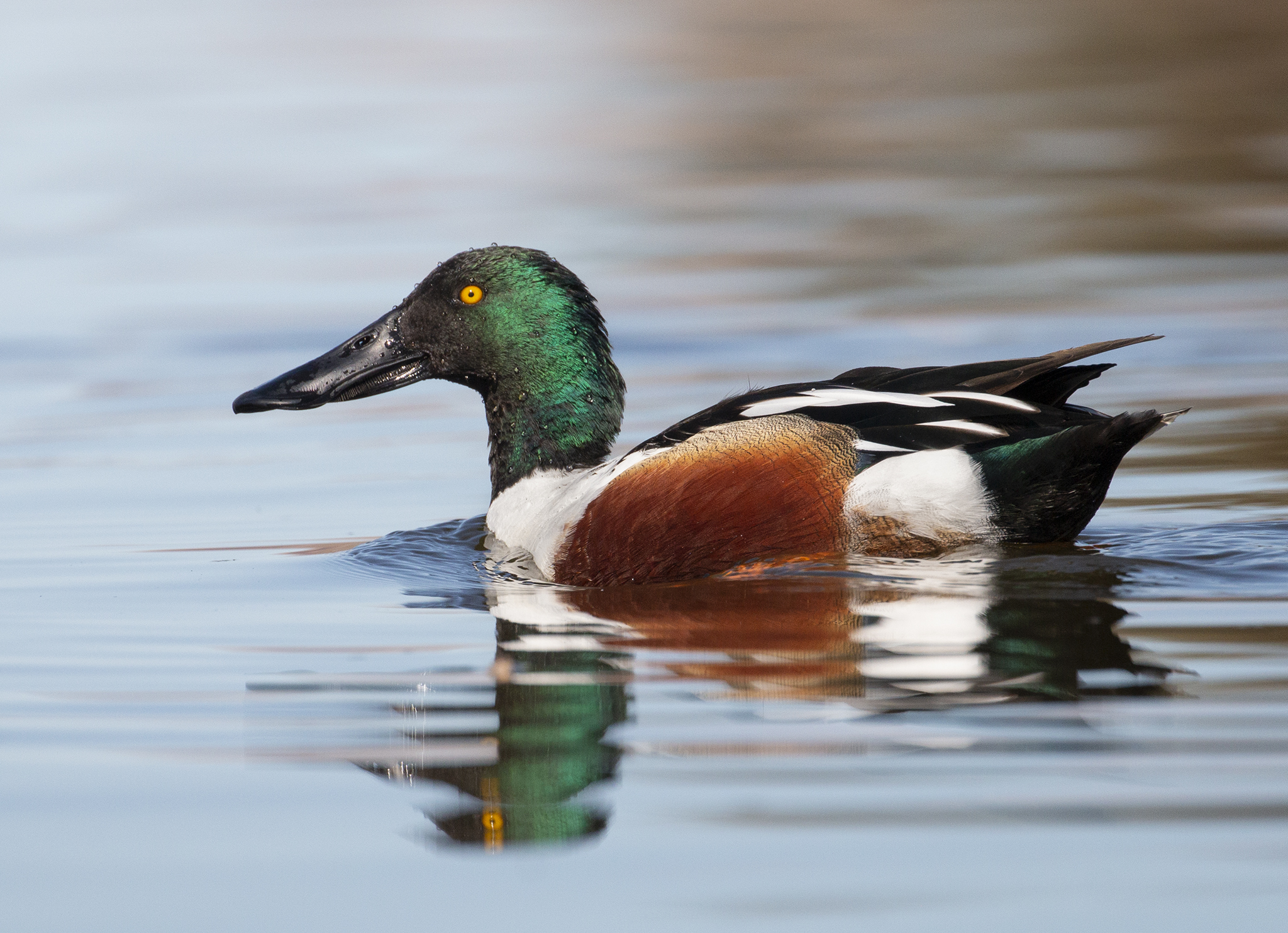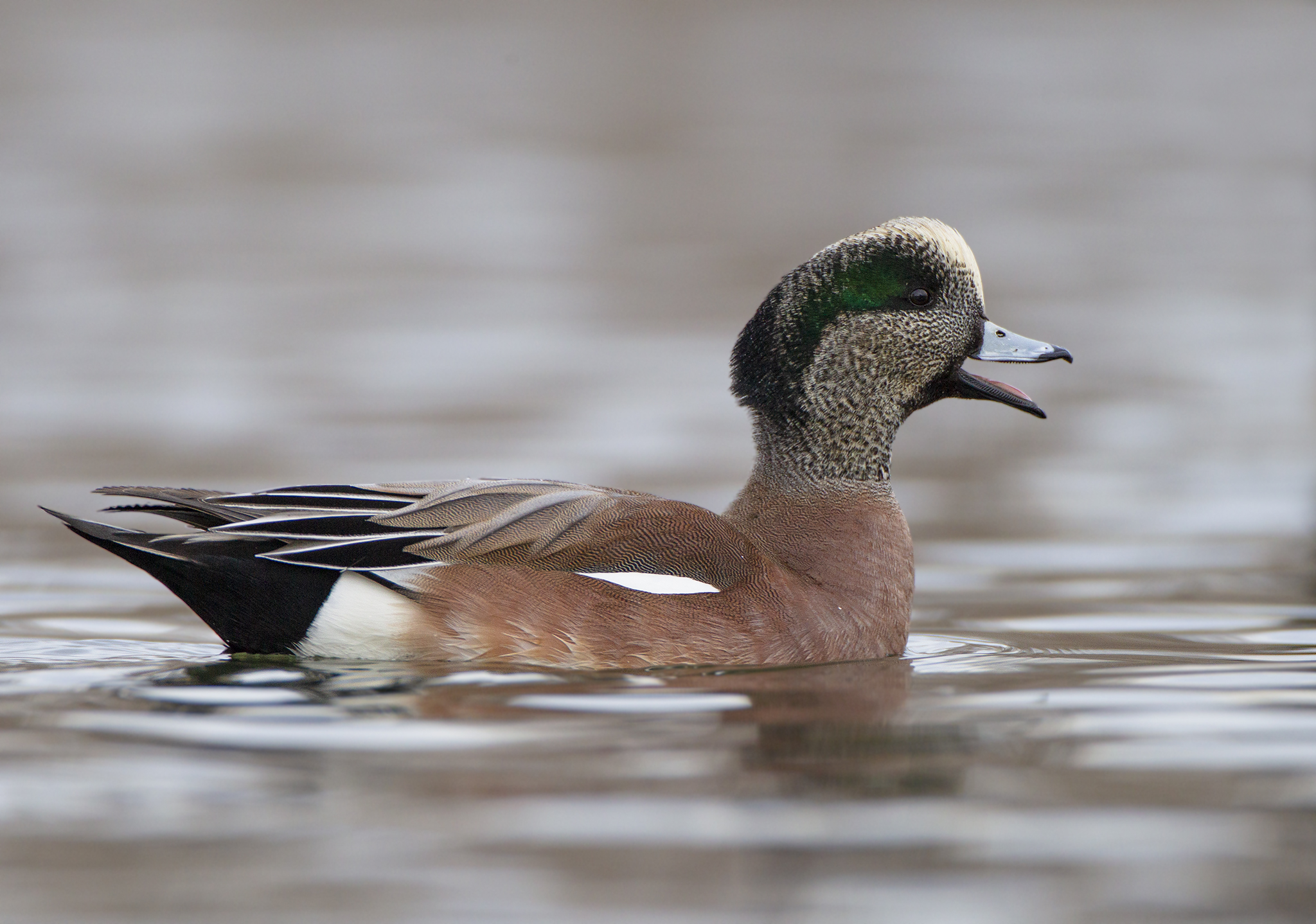Written by Peter Pearsall/Photos by Dan Streiffert
The gadwall (Mareca strepera) is a medium-sized dabbling duck of shallow freshwater wetlands, marshes, ponds, and lakes with abundant aquatic vegetation. Widespread across North America, Europe, and Asia, the gadwall’s North American breeding range spans the northern Great Plains, the Prairie Pothole Region, and parts of the western United States.
The breeding male is an intricately patterned grey, with a black rear end, light chestnut wings, and a brilliant white speculum (the wing patch visible in flight and at rest). Females, or hens, are mottled brown, resembling female mallards but with a thinner, orange-edged bill.
Gadwalls are dabbling ducks, feeding primarily by tipping forward in the water rather than diving. Their diet consists mainly of aquatic vegetation, such as pondweed, grasses, and algae, but they also consume small invertebrates, especially during the breeding season.
Breeding typically occurs in the spring and summer. Gadwalls prefer to nest in dense vegetation near water. The female constructs a shallow depression lined with down and plant material. She lays 7-12 creamy white to pale olive eggs, which she incubates for about 24-27 days. The ducklings are precocial, meaning they are relatively mature and mobile from the moment they hatch, and they quickly learn to forage for themselves.
Gadwalls are one of the earlier migrating waterfowl species in North America, often beginning their journey to wintering grounds in the southern United States, Mexico, and Central America as early as August.





